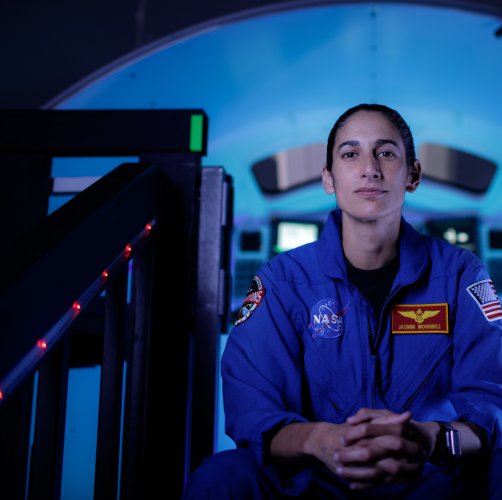1 of 5 | NASA's 212-foot-long SLS moon rocket is rolled to the Vehicle Assembly Building from the Pegasus Barge at Kennedy Space Center in Florida on Thursday. Photo by Joe Marino/UPI |
License Photo
ORLANDO, Fla., April 29 (UPI) -- NASA moved the giant core stage of the SLS moon rocket into the Vehicle Assembly Building at Kennedy Space Center on Thursday to prepare it for a launch later this year.
Teams of workers rolled the 212-foot-tall rocket off of NASA's Pegasus barge on Thursday morning. The barge had shipped the rocket from the space agency's Stennis Space Center testing stand in southern Mississippi.
"Now it's our turn to handle the vehicle," said John Cippoletti, site manager and a lead engineer for Boeing, which built the core stage, in a NASA video clip released on Thursday. "To see it come here and actually launch, it's just really exciting."
The core stage is the final piece of hardware for the planned Artemis I mission to arrive at the spaceport. It will now be joined to two solid rocket boosters and the Orion space capsule.
SLS will be the most powerful rocket in the world, producing up to 8.8 million pounds of thrust, according to NASA.
That compares to SpaceX's Falcon Heavy, which emits 7.6 million pounds of thrust at launch.
Artemis I will be an uncrewed test of the Orion spacecraft and SLS rocket. Astronauts would then fly on Artemis II in 2023 for a trip around the moon without landing.
A planned moon landing in 2024 may be delayed because NASA hasn't received full funding for its human lunar lander.
NASA's goal for Artemis missions is to "land the first woman and the first person of color on the Moon to establish sustainable lunar presence and prepare for human missions to Mars," according to the Artemis program description.
NASA successfully test-fired the SLS core stage on March 18 at Stennis for 8 minutes, simulating a launch for a lunar mission.
After the test, members of Congress hailed it as significant progress toward a return to the moon, last visited by humans in 1972.
The test brought NASA "one critical step closer to returning to the Moon and, someday, landing humans on Mars," said U.S. Rep. Don Beyer, D-Va., chair of the Subcommittee on Space and Aeronautics.
Jasmin Moghbeli
Moghbeli poses for a portrait in the Systems Engineering Simulator for the International Space Station and advanced spaceflight programs at the Johnson Space Center on July 9, 2019. She will train for the moon mission. Photo by Bill Ingalls/NASA
















